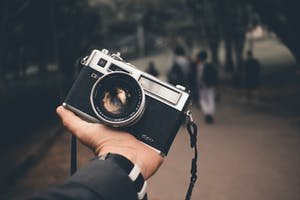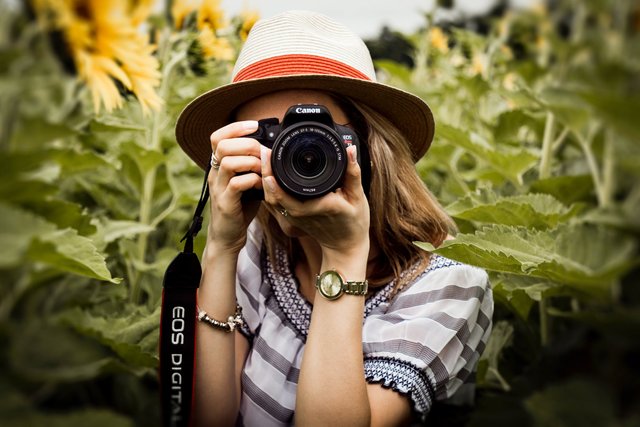The 7 fundamental things you should know about photography skills
Photography is a wonderful art form. It could be a hobby, a profession, or a recreational pastime.
(Make money by your photos)https://tinyurl.com/2cn8jw96
Take it a step further if you've mastered the fundamentals of framing, shooting, and snapping a photograph. Rather than capturing the standard holiday, pet, and kid photos, turn it into a pastime, or perhaps a career. It's time to start taking gorgeous photos instead of just mediocre ones. To improve your photography skills, follow the steps outlined.
Step 1:Find someone who can assist you in purchasing a functional camera. Perhaps your father or a photographer buddy has an old film SLR lying around. Borrow a camera if you don't have one till you can afford one. Almost any digital camera from the previous decade, as well as practically any film camera ever created, will produce excellent results. Having your camera with you will be quite beneficial.

Step 2: If you haven't already, learn the fundamentals. Composition, which is essentially the placement of a subject within the frame of a shot, lighting, and the basic workings of your camera are all fundamentals of photography. For some basic information, see How to Take Better Photographs. [1]
SELL YOURS PHOTOS AND MAKE MONEY
💸 https://tinyurl.com/2cn8jw96
Step 3:Prepare yourself. Being at the right position at the right moment, with a camera in hand, makes the difference between a terrific shot and a poor one at least half of the time. Carry your camera about with you as much as possible. Also, remember to utilise your camera on a regular basis. It's useless to just tote it around. [2]
Step4:Be present. Being "prepared" is insufficient. "Anything that presented itself," Ken Rockwell says of his early experience. Did you catch the spoiler word in my logic? I was just a bystander. I used to believe that photography entailed snapping images of whatever happened to be nearby. No! You must go out and look for stuff. Finding and seeing are the difficult parts; photographing what you find is the easy part. [3] Get up, go outside, and shoot some pictures. Every day, go out and look for objects at all hours of the day. Don't sit around waiting for the proper opportunity to present itself (though be ready if it does! ); go out and discover them. Look for possibilities wherever you go (whether it's the mall or on the street).
Step 5:Stop looking for subjects to photograph and learn to see.
Look for colors. Or do the opposite: look for a total absence of color, or shoot in black-and-white.
Look for repetition and rhythm. Or do the opposite, and look for something completely isolated from the things around it.
Look for lighting, and the lack of such. Take photographs of shadows, or reflections, or light streaming through something, or of things in total darkness. Many people find 'golden hour' (last two hours of daylight) to be the ideal light conditions for photographs. This is due to the directional light it creates, which can create depth in a photo when utilized properly. However, that doesn't mean one can't photograph during mid-day and still find good light. Sun directly overhead can be viewed as harsh, look for foggy conditions or open shade to find nice soft light. But, rules are made to be broken, don't take these guidelines too literally![5]
Look for emotion and gesture if you're photographing people. Do they show happiness? Mischievousness? Sadness? Do they look thoughtful? Or do they just look like another person mildly annoyed to have a camera pointed at them?
Look for texture, forms, and patterns. Great black-and-white photographs are stunning because black-and-white forces the photographer to look for these things.
Look for contrasts. Look for something that stands out from the rest of the shot. In your composition, use the wide end of your zoom (or a wide-angle lens) and get closer and make it so. Look for contrasts of all the things above: color amid dullness, light among the darkness, and so on. If you're photographing people, try putting (or finding) your subject in a context in which they stand out. Look for happiness in unexpected places. Look for a person in a surrounding in which they appear out-of-place. Or ignore this and take them completely away from their context by opening your lens all the way to blur the background. In short...
Look for anything that will hold a viewer's interest which isn't a traditional "subject". As you find your niche, you'll probably find that you end up going back to taking photographs of subjects again. This is fine. Looking for things which aren't subjects will improve your photography no end—you'll soon see a different world altogether.

Step 6:
Maintain as much simplicity as possible in your images. Attempt to get as near to your topic as possible. To fine-tune your composition, utilise your feet and your zoom lens (if you have one). Remove anything that doesn't provide enough context for you to completely comprehend your photo.
Step 7:Make a film. Shoot digital if you're currently shooting film. In the arsenal of a budding photographer, both film and digital cameras have a role. They each have their own set of benefits and drawbacks, and they will teach you a separate set of habits. Digital's bad tendencies are counterbalanced by film's positive habits, and vice versa.
Digital cameras provide instant feedback on what you're doing well and what you're doing incorrectly. They also eliminate the cost of experimentation. Both of these elements are essential for a beginning photographer. The zero cost of digital, on the other hand, makes it far too easy to get into the habit of "spraying and praying" and hoping for a good photo at the end of the day.
If you are want to make money by selling your photos click the link.
https://tinyurl.com/2cn8jw96
